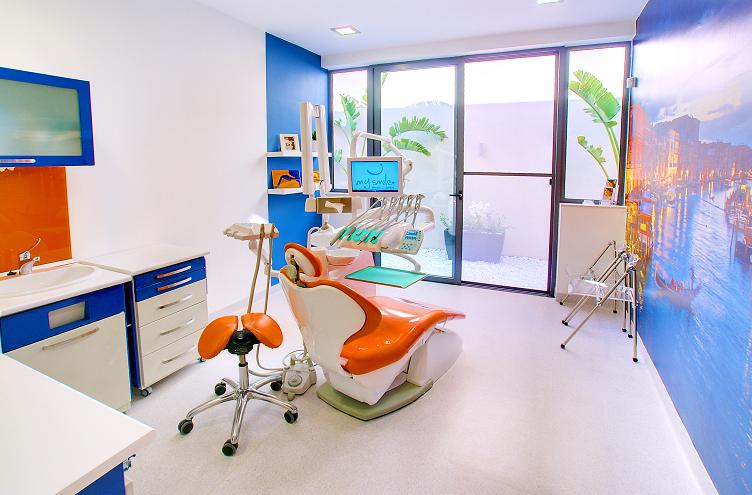General Dentistry

COMPOSITE FILLING
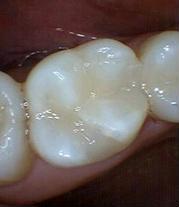 More commonly known as a “white filling”, the main advantage of this material is its high aesthetics and for this reason it is the most commonly used restorative material. An adhesive is used to make the composite stick to the tooth and this strengthens the tooth structure.
More commonly known as a “white filling”, the main advantage of this material is its high aesthetics and for this reason it is the most commonly used restorative material. An adhesive is used to make the composite stick to the tooth and this strengthens the tooth structure.Composites come in a variety of shades and your MySmile dentist will pick the shade which matches your tooth to make the filling virtually impossible to detect. This filling material is placed into/ onto the tooth and contoured and then a special blue light is shone onto it. This light makes the composite completely hard and after some polishing to give the white filling a nice glossy finish, you can chew and eat immediately. Unlike metal fillings, tooth-coloured fillings appear natural and the bonding process can stregthen the teeth.
- How long do bonded composite fillings last? There are many variables including the size, location and biting forces that can affect the longevity of the filling but generally speaking a composite filling usually lasts between 7 and 10 years.
Composite Veneer
A layer of highly-aesthetic white composite filling material may be bonded to the visible surfaces of front teeth usually to improve the shape and appearance of the front teeth. You may want to consider composite veneers if you have discoloured teeth, worn teeth, spaced teeth, if your teeth are not properly aligned or if you don't like the shape of your front teeth.- What is the difference between composite veneers and ceramic veneers? Both can be used for similar problems but ceramic veneers will generally last longer and look better.
AMALGAM FILLING
.jpg) This is generally referred to as a metal/silver filling and its use is on the decline mainly for aesthetic reasons. However it still remains a superior restorative material with the best long-lasting durability in certain particular cases.
This is generally referred to as a metal/silver filling and its use is on the decline mainly for aesthetic reasons. However it still remains a superior restorative material with the best long-lasting durability in certain particular cases.
- How long do metal amalgam fillings last? There are many variables including the size, location and biting forces that can affect the longevity of the filling but generally speaking a metal filling will give many years of service.
ROOT CANAL TREATMENT
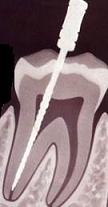 If a tooth gets knocked, heavily decayed, cracked or has deep fillings, it can fire off the pain signals we call "toothache". The inner central part of a tooth contains a space in which there is the pulp serving as the tooth's alarm system. Whenever the nerves in the pulp become inflamed, this usually causes severe pain especially on eating/drinking something hot/cold. At this point, the tooth cannot simply be restored with a filling because a filling does not treat the inflammation of the nerve. Either a root canal treatment has to be carried out, wherein the nerves of the tooth are removed to stop the pain and the tooth is saved, or the tooth has to be extracted (pulled out).
If a tooth gets knocked, heavily decayed, cracked or has deep fillings, it can fire off the pain signals we call "toothache". The inner central part of a tooth contains a space in which there is the pulp serving as the tooth's alarm system. Whenever the nerves in the pulp become inflamed, this usually causes severe pain especially on eating/drinking something hot/cold. At this point, the tooth cannot simply be restored with a filling because a filling does not treat the inflammation of the nerve. Either a root canal treatment has to be carried out, wherein the nerves of the tooth are removed to stop the pain and the tooth is saved, or the tooth has to be extracted (pulled out).During a root treatmant, the root canals of the tooth have to be carefully cleaned and shaped to remove bacteria and any remaining unhealthy pulp. High-tech tools are used including miniature files that can flex to follow the curves of the root canals. After the canal has been disinfected, rinsed and dried, a rubbery material called gutta percha (GP) is used to seal it and finish the procedure.
Root canal treatments at MySmile are carried out using one of the latest innovative systems called Protaper, giving predictably good results and also reducing the time that a patient has to spend at the dentist. Most root-canal treated teeth should be restored with a crown to protect them from fracturing.
- Why is it recommended to have a crown on a root-canal treated tooth? When a root-canal treatment is carried out, the tooth is devitalised (dead) and it becomes brittle and much more prone to fracture. A crown definitely helps prevents a tooth from fracturing.
POST AND CORE
Teeth which have had root-canal treatments often need to be strengthened with a crown but it's also true that teeth like these often do not have a solid base on which to place the crown. That is when a post and core can help. A post is placed into the root and then a core material filling is added onto the post to build up the tooth, thus providing a stable and secure base for the crown.
- What material is the post made of? A post is usually made of glassfibre or titanium.
- Is placing the post a painful procedure? Not at all. When a root-canal treatment has been carried out, the tooth is dead and you do not even need local anaesthetic to place the post since you will not be feel anything.
_________________________________________________________________________________________________________
VENEERS, CROWNS and BRIDGES
Veneers, crowns and bridges can provide aesthetically dramatic results. They look completely natural since the shade of the adjacent teeth is recorded to make this restoration match the rest of the teeth. Veneers, crowns and bridges are made to stick permanently to the tooth or teeth by cementing them with a dental adhesive cement, restoring a healthy smile.- Do veneers, crowns or bridges require special care? Routine brushing and flossing are very important to maintain healthy teeth.
CERAMIC VENEER
Veneers are thin layers of custom-made all-ceramic material (sometimes also referred to as dental porcelain) which are bonded to the teeth's surfaces usually to improve the shape and appearance of the front teeth. You may want to consider all-ceramic veneers if you have discoloured teeth, worn teeth, malaligned teeth, spaced teeth or if you don't like the shape of your front teeth.Two appointments are usually required to make a veneer. At the first appointment, a small amount of tooth is removed to make room for the veneer. An impression is taken of the prepared tooth or teeth and a temporary restoration is placed, ending the first appointment. The impression is used by the lab technician to make a model on which the veneer is made. At the second appointment, the temporary restoration is removed, the tooth is cleaned and the veneer is bonded with a dental adhesive cement.
- What is the difference between composite veneers and ceramic veneers? Both can be used for similar problems but ceramic veneers will generally last longer and look better.
- How long do veneers last? With care, veneers should provide years of service.
- What can cause a veneer to chip, break or come off? Habits such as fingernail biting or pencil chewing can cause this.
- Can I have veneers if I habitually clench and grind ny teeth at night (bruxism)? In your case, a bruxism splint or nightguard is recommended to be worn at night to help protect your veneers.
CROWN
A crown consists of a restoration which completely caps or covers the tooth or implant. Broken teeth or teeth which have large defective fillings can be restored to their proper form, function and appearance with crowns. Teeth which have had a root canal treatment should also be crowned to help protect them from fracture. Crowns an also be used for cosmetic enhancement.Two appointments are usually needed to make a crown. The shape of the prepared tooth is important for retention of the crown so it is often necessary to build up the tooth with a filling before preparing the tooth for a crown. The tooth is then prepared so the finished crown has room to slip over it (like a glove). An impression is taken of the prepared tooth and a temporary crown is placed, ending the first appointment. The impression is used by the lab technician to make a model on which the crown is made. Crowns can be all-ceramic, all metal or a combination of both. At the second appointment, the temporary crown is removed and the new crown is bonded with a dental adhesive cement. The tooth is now restored to a healthy functioning state.
- What can happen if I do not have a crown done on a root-canal treated tooth? Although the root-canal treated tooth (restored with just a filling) may last for a while, the end result is usually fracture of the tooth. At this point it is usually too late to save the tooth by having a crown made and the tooth may need to be extracted.
BRIDGE
A bridge is a fixed restoration used to replace a missing tooth or teeth by fixing it permanently to the adjacent teeth or implants. Fixed bridges can restore missing teeth to their original form, function and appearance.Two appointments are usually required to make the bridge. At the first appointment, the teeth on either side of the space are shaped and prepared. An impression is taken of the prepared teeth and a temporary bridge is placed, ending the first appointment. The impression is used by the lab technician to make a model on which the bridge is made. Bridges can be all-ceramic, all metal or a combination of both. At the second appointment, the temporary bridge is removed and the new bridge is bonded with a dental adhesive cement.
- Why should missing teeth be replaced? The two main reasons are appearance and dental health.
- What can happen if a missing tooth is not replaced? Teeth adjacent to a missing tooth will tend to drift into the space. Areas sucha s this can collect food and plaque easily which can lead to decay or gum disease. Teeth opposite the space can also drift into the space created by the missing tooth (over-eruption) causing more problems.
All-Ceramic VS. Metal-and-Ceramic Systems
Crowns and bridges can mainly be all-ceramic or a combination of metal and ceramic, whilst veneers are always all-ceramic. The most advanced all-ceramic system is CEREC and we solely use this system at MySmile when restoring teeth with all-ceramic restorations.All-Ceramic CEREC System (Veneers, Crowns and Bridges)
The CEREC system is one of the most advanced cutting-edge products in the world of dentistry and is considered as the gold-standard. It makes use of high resolution 3D photography and CAD/CAM (Computer-Aided Design and Computer-Aided Manufacturing) to have the restoration fabricated. When the design is complete, the information is sent to a machine which cuts the restoration from a solid block of material using diamond burs. Since CEREC restorations do not contain any metal, the restoration is translucent and allows light to shine through it, resulting in impressive aesthetic results.
Metal-and-Ceramic System (Crowns and Bridges)
The crown or bridge consists of an inner metal shell covered by an outer layer of ceramic to give the restoration a white tooth-like appearance.
- What type of crown or bridge is best? The general trend is to shift exclusively to all-ceramic crowns for aesthetic and biocompatible reasons, especially in cases where aesthetics are a primary concern.
IMPLANTS
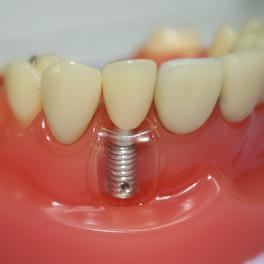 When you lose a tooth, there are various ways of replacing it including fixed bridges and removeable dentures, but if you want your new tooth to be as clsoe as possible to a real tooth, a dental implant is the answer. A dental implant is a screw-shaped device made in titanium which is placed in the upper or lower jaw to replace the root of a missing tooth.
When you lose a tooth, there are various ways of replacing it including fixed bridges and removeable dentures, but if you want your new tooth to be as clsoe as possible to a real tooth, a dental implant is the answer. A dental implant is a screw-shaped device made in titanium which is placed in the upper or lower jaw to replace the root of a missing tooth.Every tooth, natural or artificial, needs bone to anchor it to the jaw. Therefore, once the anaesthetic has worked, a small flap of gum is eased to gain access to the bone. A new socket has to be made for the implant using a series of high-precision burs to shape the bone. The socket is carefully widened until it is exactly the right size of the chosen implant and the implant is fitted precisely into place. The bone of the jaw accepts and fuses to the implant surface. Amazingly, bone grows right into these tiny implant threads and locks the implant in place. A specially-shaped abutment is attached onto the implant and an impression is taken so this can be used by the lab technician to make a model on which the custom-made crown is made. Once your new crown is cemented onto the implant, your new tooth looks just like any other natural one and your smile is as good as new.
Besides being used to support crowns, implants can be used to support other dental prostheses as in the case of implant-supported bridges or implant-supported dentures. Dental implants may be split into two separate categories based on the diameter of the device. Dental implants are best placed in cases where the quality and quantity of the bone available at the site is adequate and the patient's oral hygiene is good.
Conventional Implants
Standard or conventional implants are those implants larger than 3mm in diameter, most commonly 4- 5mm. They may be used to support crowns, bridges and dentures. Implants are considered as the most conservative treatment when replacing a missing tooth or teeth since the adjacent teeth do not need to be cut at all.Mini-Implants
These dental implants have a diameter less than 3mm. They are more commonly used to support dentures. In fact, mini-implants are particularly useful in a patient who has lost all the teeth in a jaw and the denture is loose due to the fact that there is limited bone left to help keep the denture in place. In such a case, a number of mini-implants are placed and the denture is held in place by seating over the mini implants.- Is the surgical part of the implant procedure a painful procedure? No. With adequate local anaesthesia, no part of the implant procedure should be painful. You will be prescribed analgesics to act against any potential pain and discomfort following the procedure when the local anaesthetic wears away.
DENTURES
A denture is a removable prosthesis constructed to replace missing teeth. When all the teeth are being replaced, the denture is referred to as a complete denture. When only some of the teeth are being replaced, a partial denture is made and this may include clasps which attach onto the remaining teeth to help keep the denture in place.There are two main types of dentures. Acrylic dentures are completely made in acrylic whereas Cobalt-Chrome (Metal) Dentures consist of a thin metal framework with very precise fitting retentive features and the rest of the denture is made in acrylic.
- Do I have to clean my dentures after eating? Yes, whenever it is possible to remove the dentures and brush them clean under running water after eating, you should do so to help maintain good oral hygiene and help prevent any remaining teeth from decaying.
- Do I have to remove my dentures at night? Yes you should remove your dentures when you go to sleep. Otherwise an oral fungal infection will develop.
BEFORE TREATMENT AFTER TREATMENT
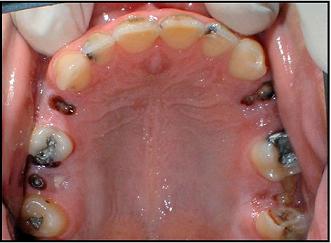
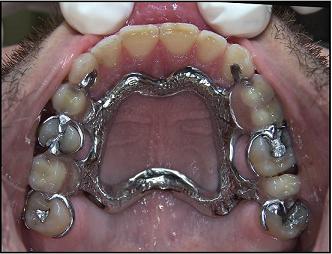

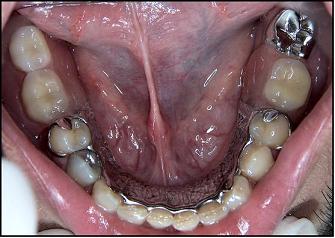
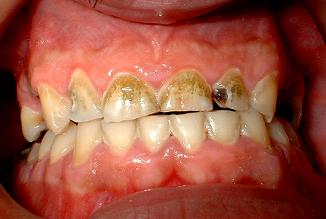
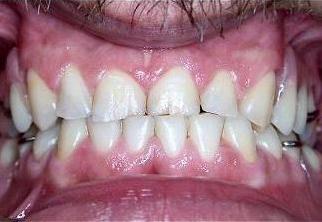
_________________________________________________________________________________________________________
DENTAL EXTRACTIONS
General Extraction
If a tooth gets knocked, heavily decayed, cracked or has deep fillings, it can fire off the pain signals we call "toothache". The inner central part of a tooth contains a space in which there is the pulp serving as the tooth's alarm system. Whenever the nerves in the pulp become inflamed, this usually causes severe pain especially on eating/drinking something hot/cold. At this point, the tooth cannot simply be restored with a filling because a filling does not treat the inflammation of the nerve. Either a root canal treatment has to be carried out, wherein the nerves of the tooth are removed to stop the pain and the tooth is saved, or the tooth has to be extracted (pulled out).
- Is a dental extraction a painful procedure? Extractions should be pain-free if adequate local anaesthetic is administered. However, some patients associate the pulling forces required to extract a tooth with pain and it can be an uncomfortable experience for anxious patients. Therefore we recommend having the dental extraction carried out under Inhalation Sedation (laughing gas) in dental phobic patients. This will help the patient gain the required confidence to attend for any necessary restorative dental treatment to save the remaining teeth and thus avoid having more teeth extracted in the future.
Wisdom Tooth (Surgical) Extraction
Wisdom teeth are the last teeth to come through and sometimes there is not enough room for them. Brushing the wisdom tooth properly may be difficult because of the limited space at the very back of the mouth. To complicate matters, erupting wisdom teeth can get stuck at strange angles and that is where the trouble starts. Bacteria and food can accumulate around the wisdom tooth, causing inflammation and swelling of the gums surrounding it. This condition is called pericoronitis and the condition may progress to an infection causing a larger swelling filled with pus which is painful and may limit opening of the mouth. If the wisdom tooth seems like it can still straighten up, you might just have to learn how to clean it better. In other cases where the pericoronitis recurs, you may need to have the wisdom tooth removed.When a wisdom tooth stops coming out of the gums because it gets stuck against the adjacent molar tooth (also referred to as an 'impacted wisdom tooth'), food and plaque tends to accumulate in between these teeth causing decay. As a result, your dentist will sometimes recommend extracting an impacted wisdom tooth to prevent damage to the other molar.
It might seem an impossible to ask to remove an impacted wisdom tooth since it is hiding behind the gums and other teeth. But dental surgeons have some clever techniques to ease it out.
- Is a wisdom tooth extraction a painful procedure? The wisdom tooth extraction should be pain-free if adequate local anaesthetic is administered. However, some patients associate the pulling forces required to extract a tooth with pain and it can be an uncomfortable experience for anxious patients. Therefore we recommend having the wisdom tooth extraction carried out under Inhalation Sedation (laughing gas) in dental phobic patients.
